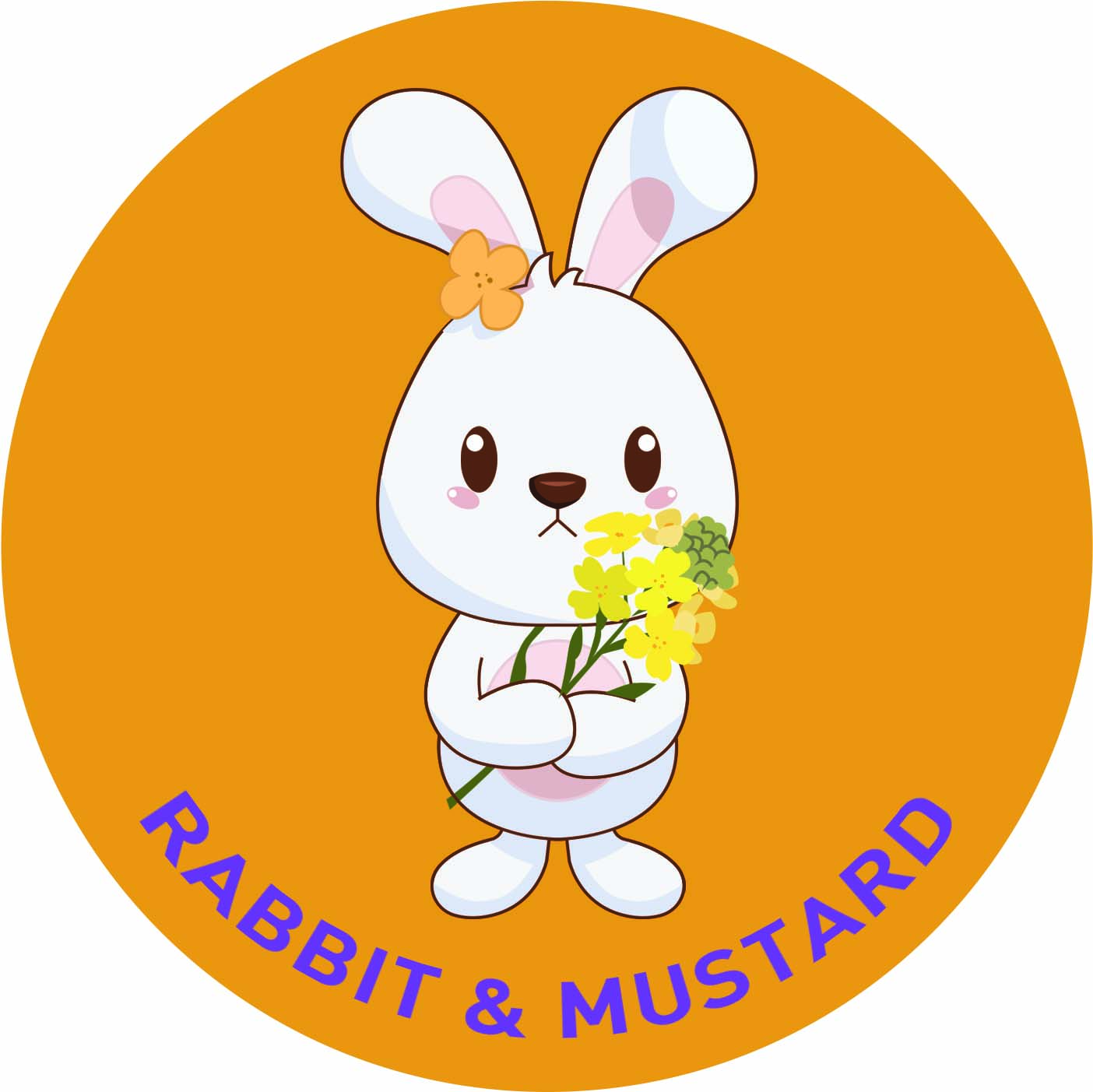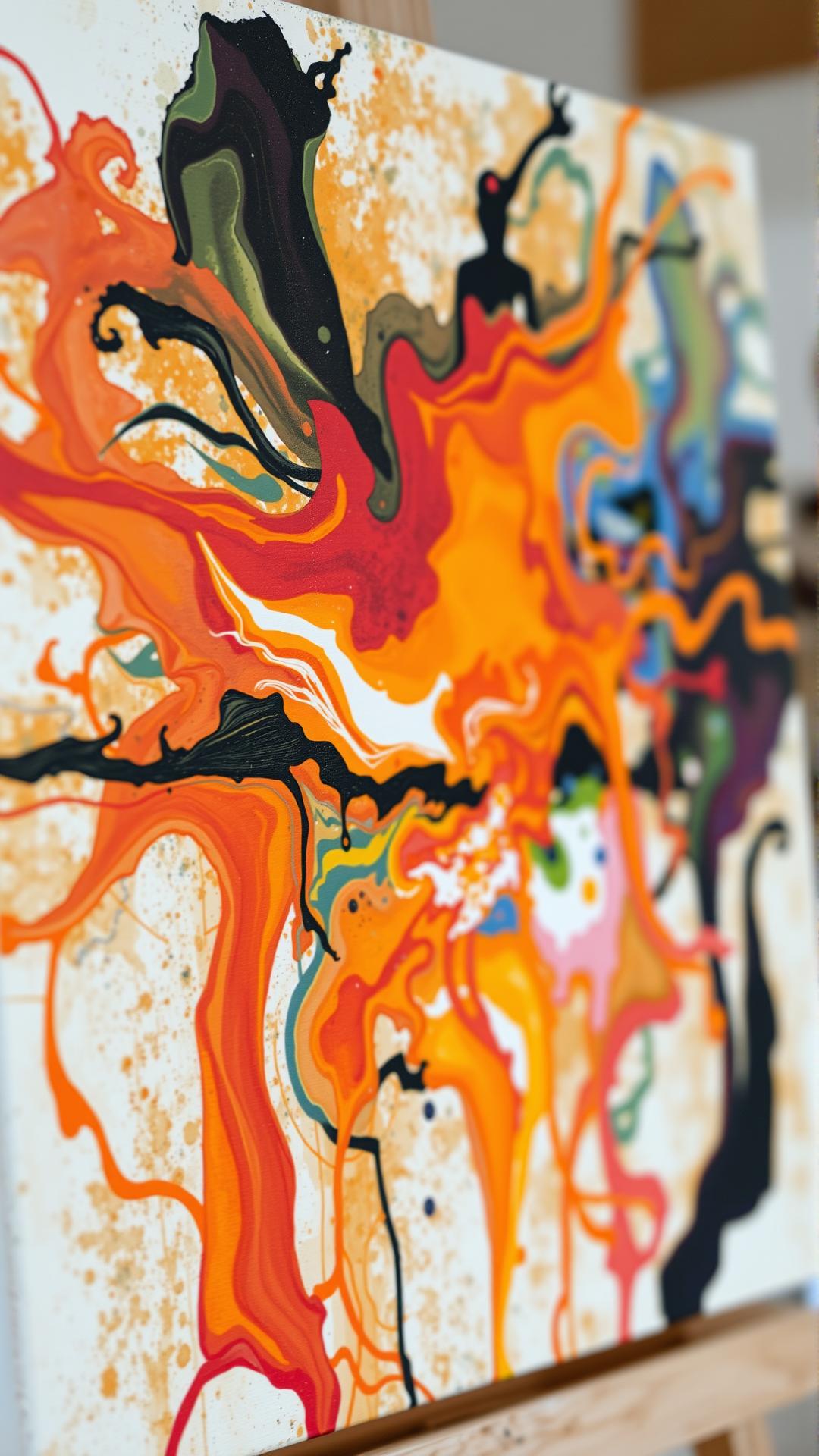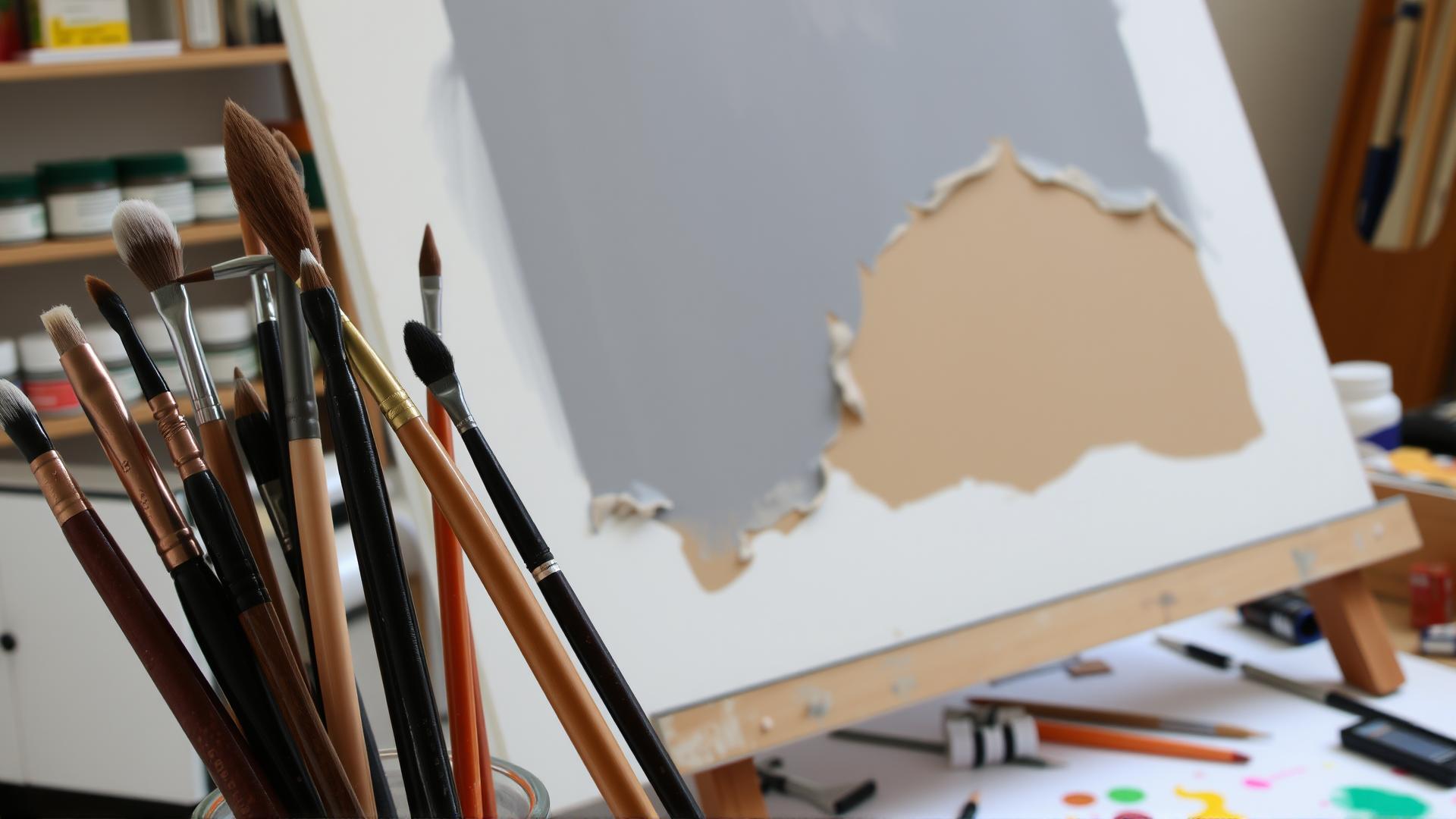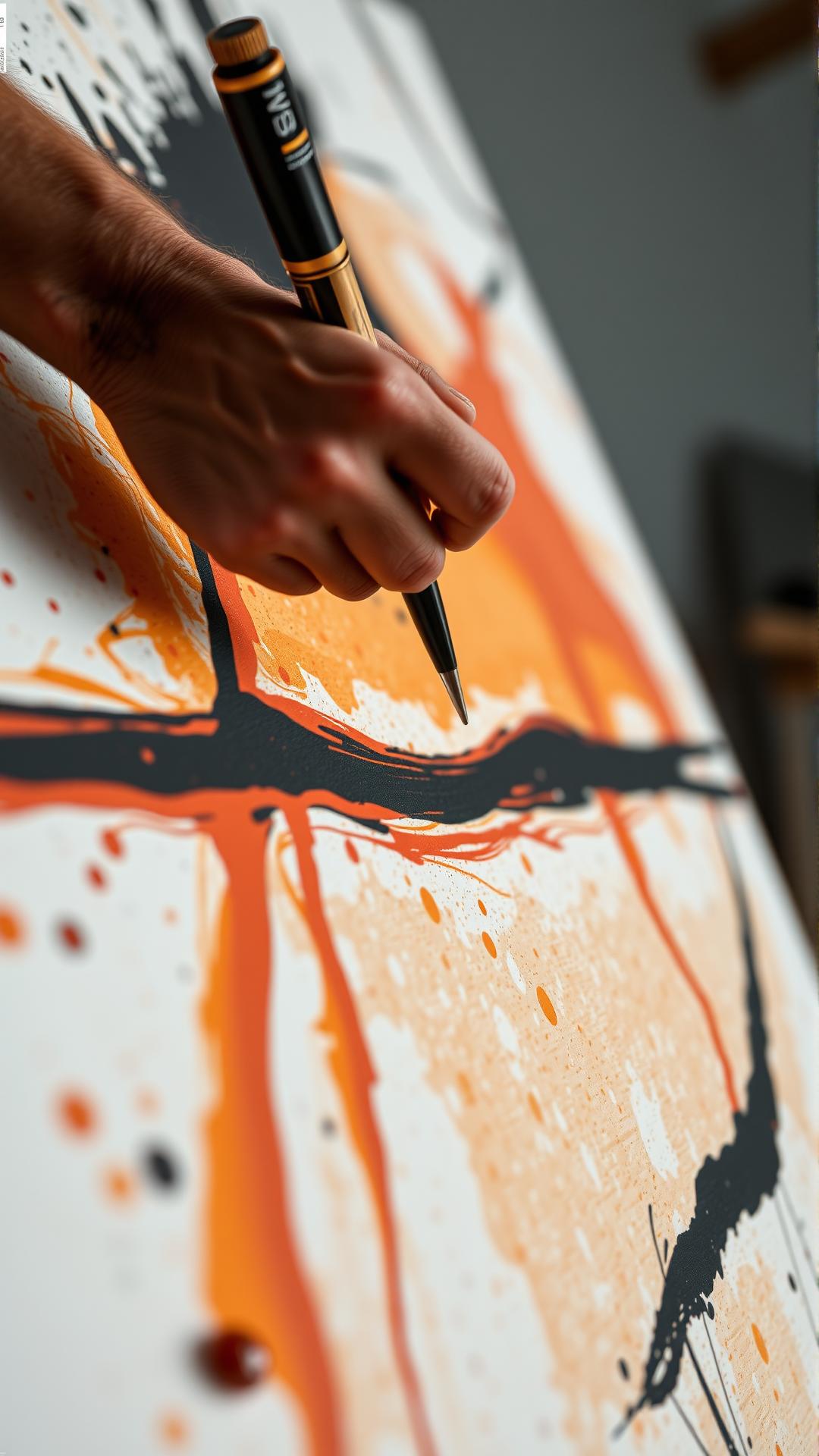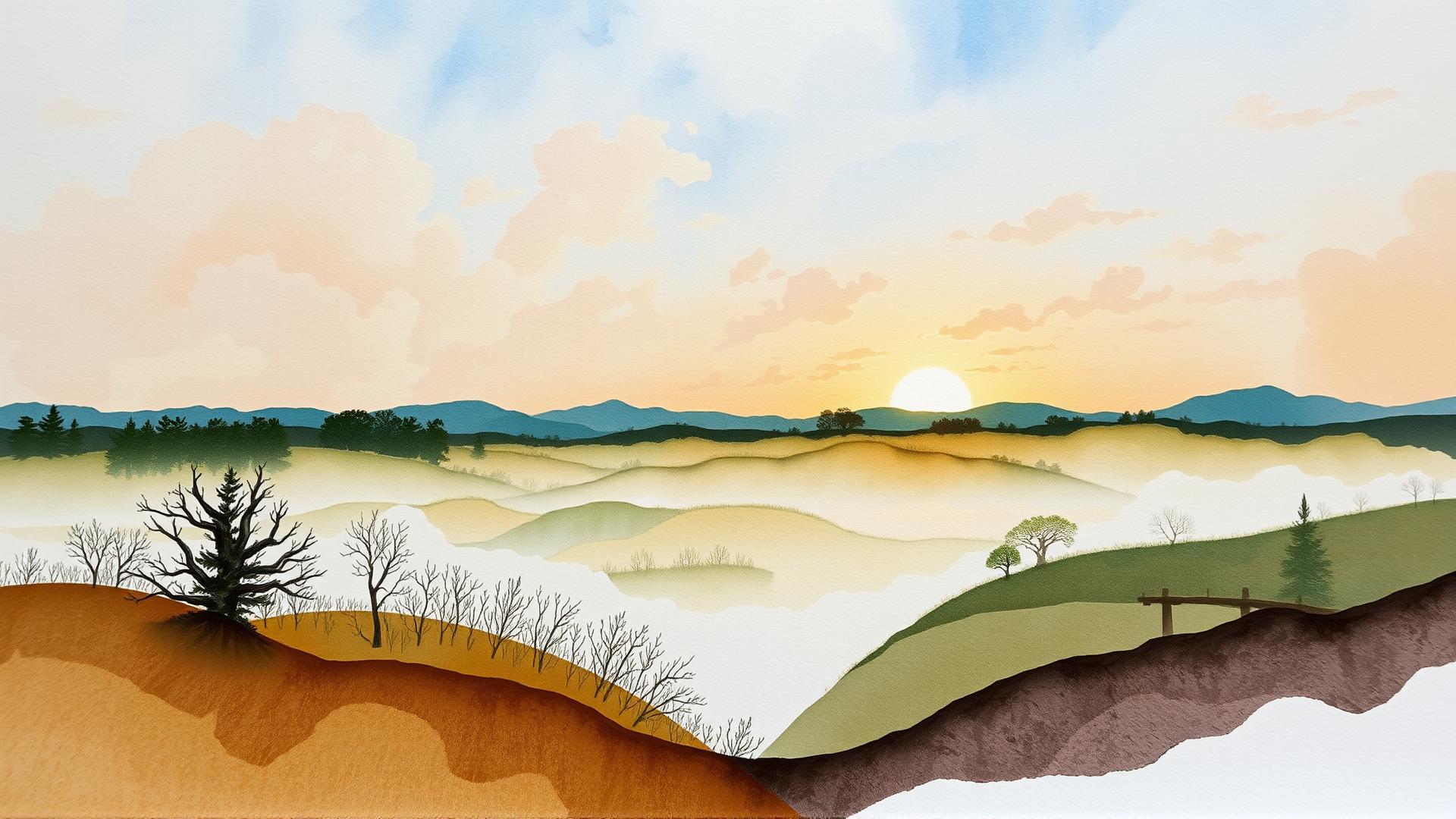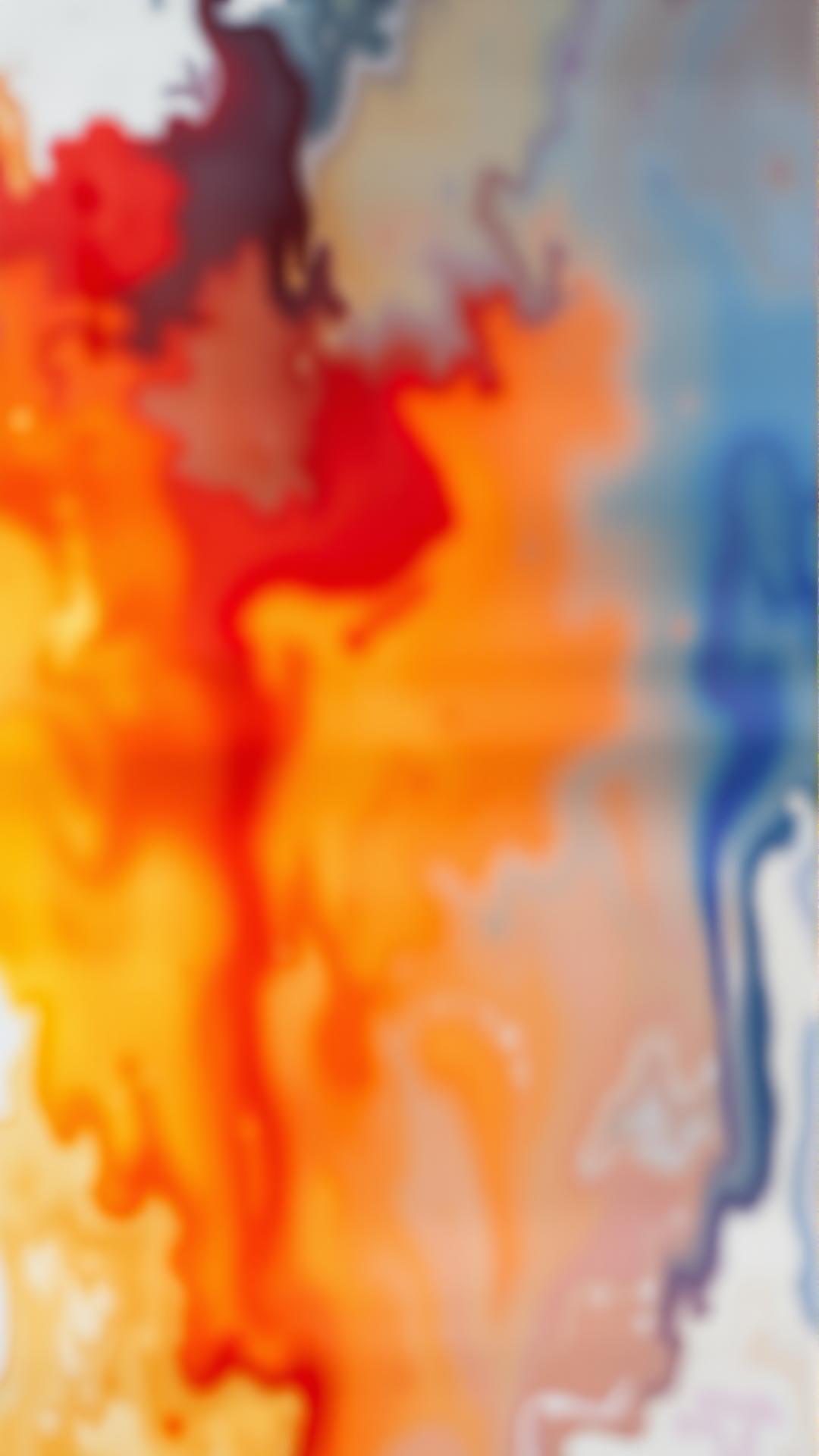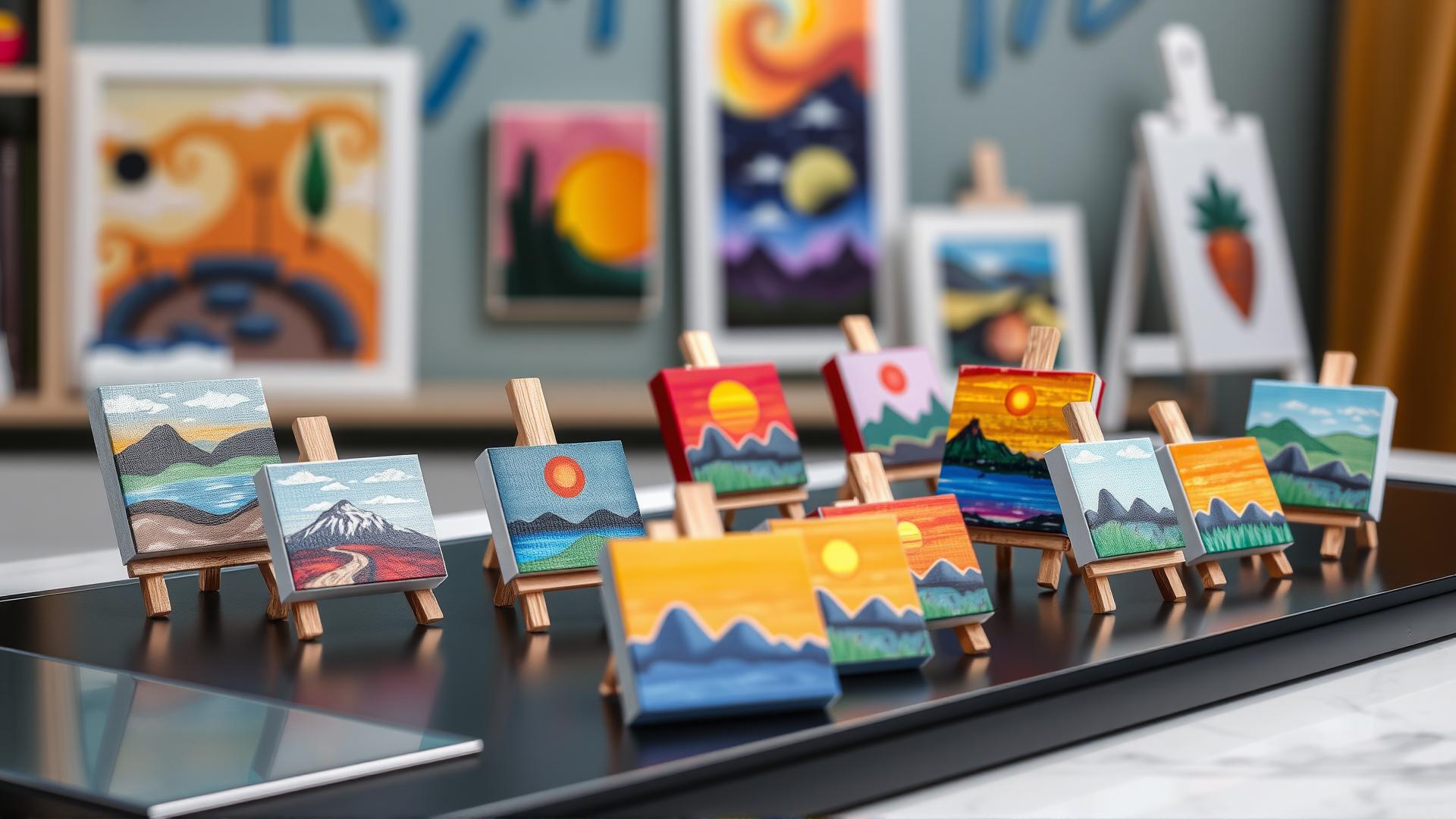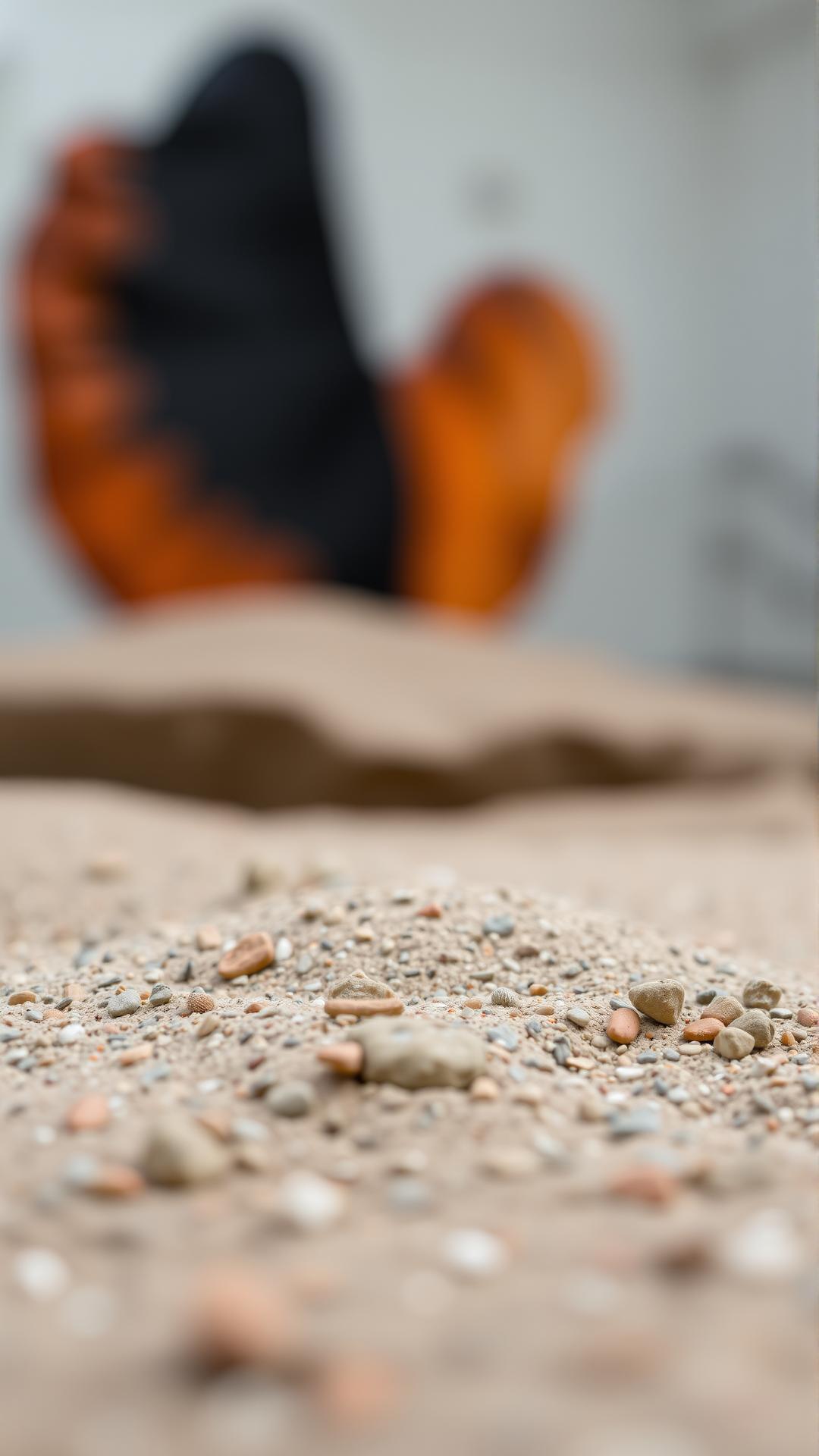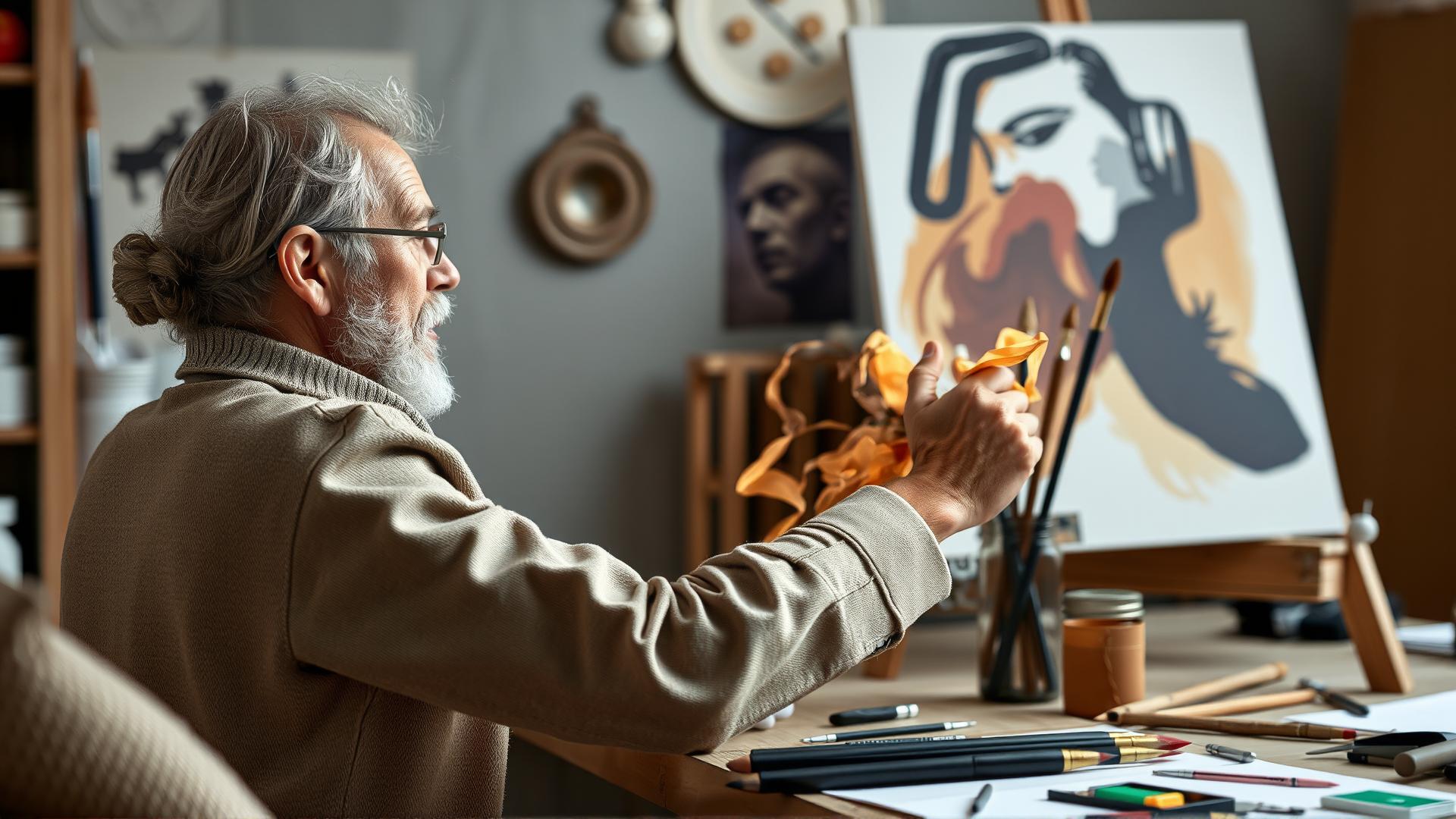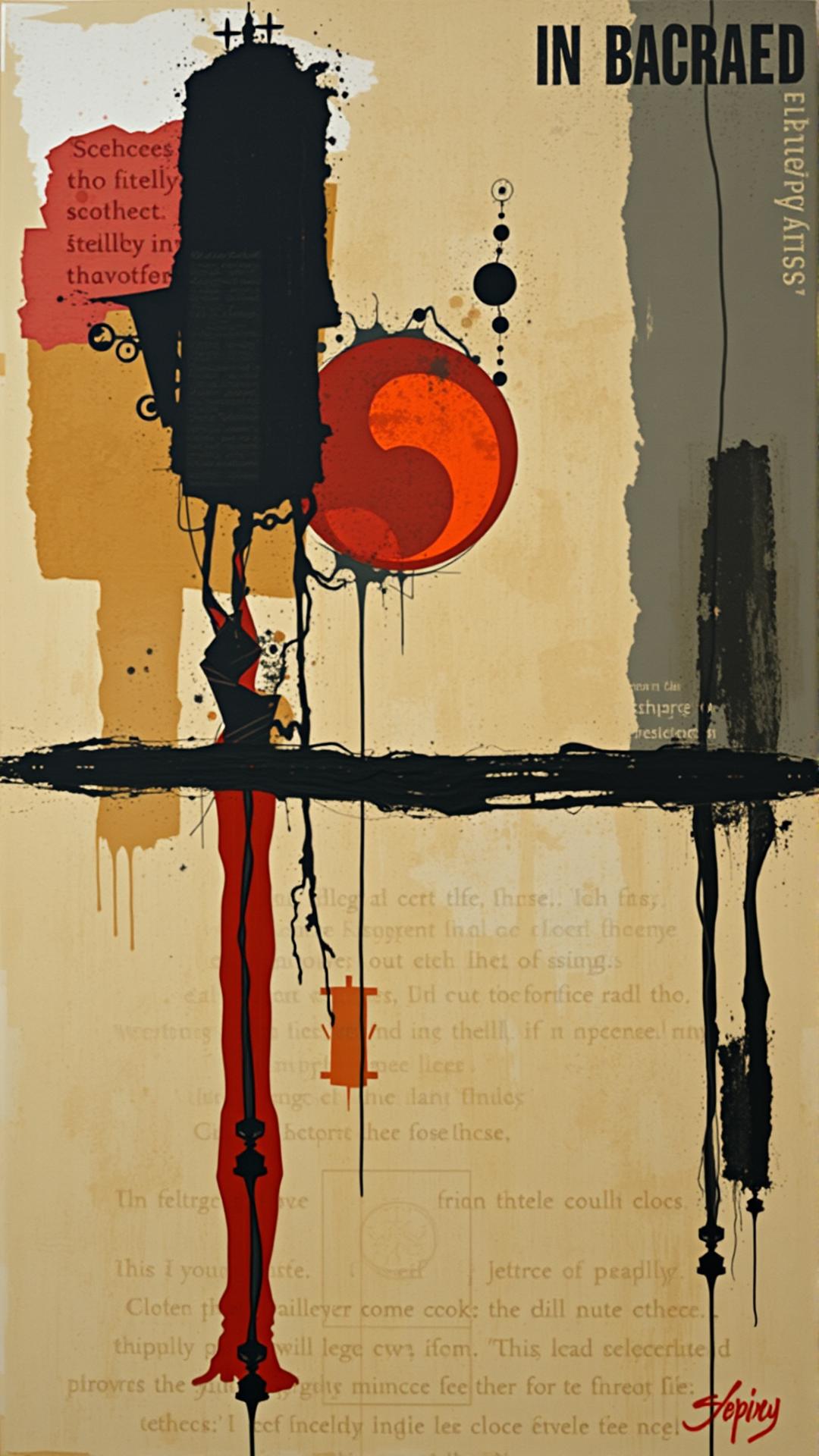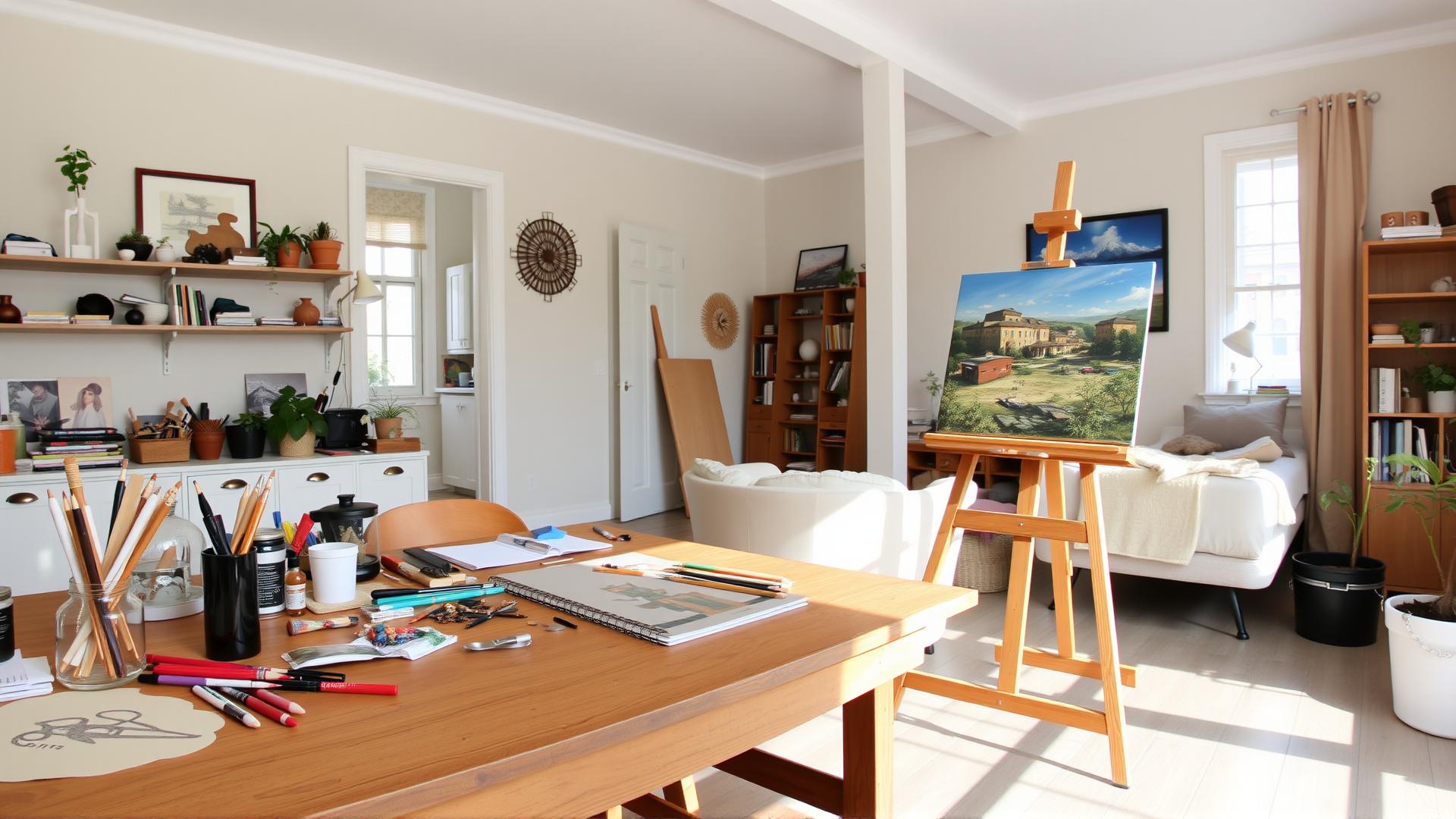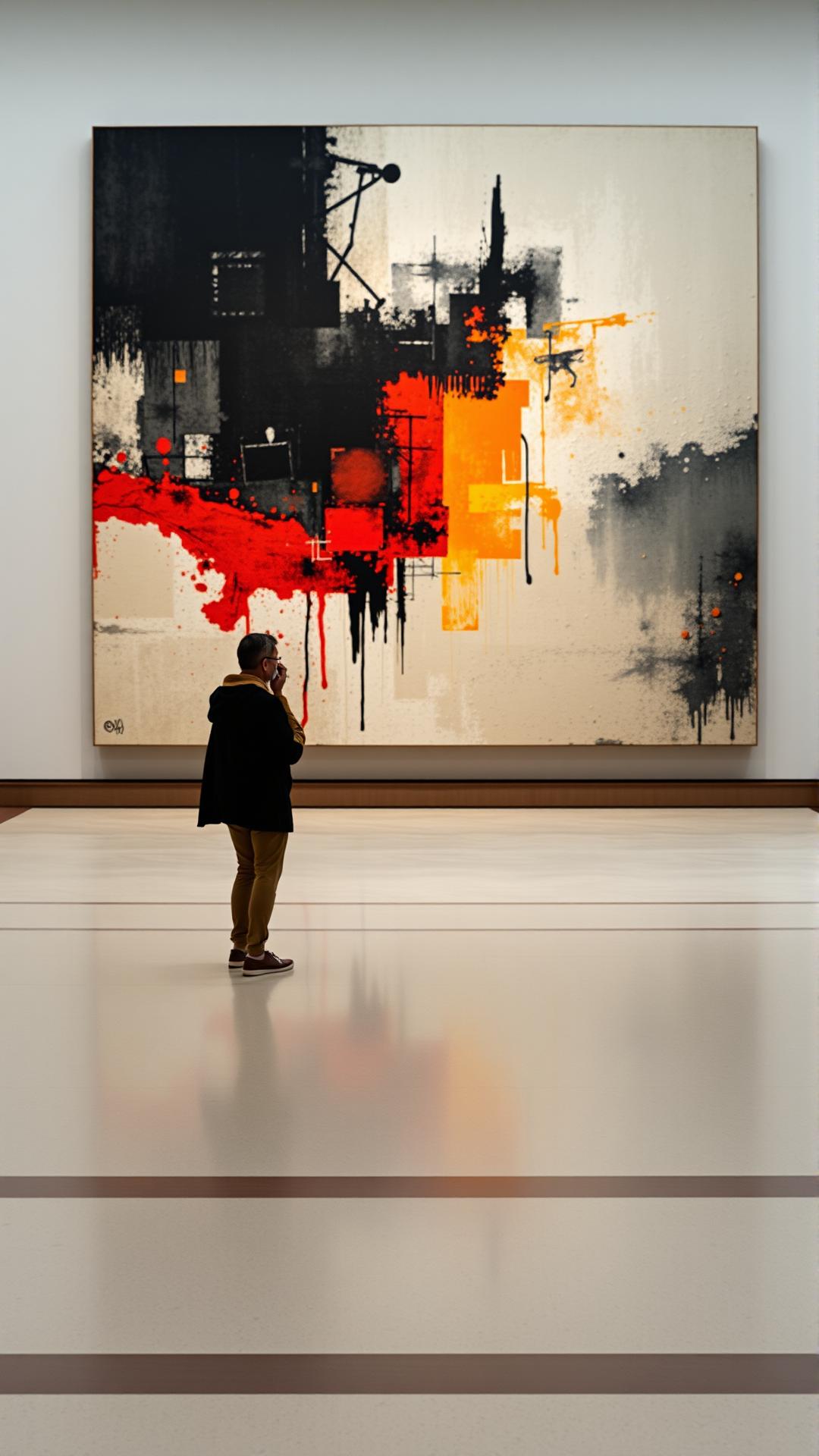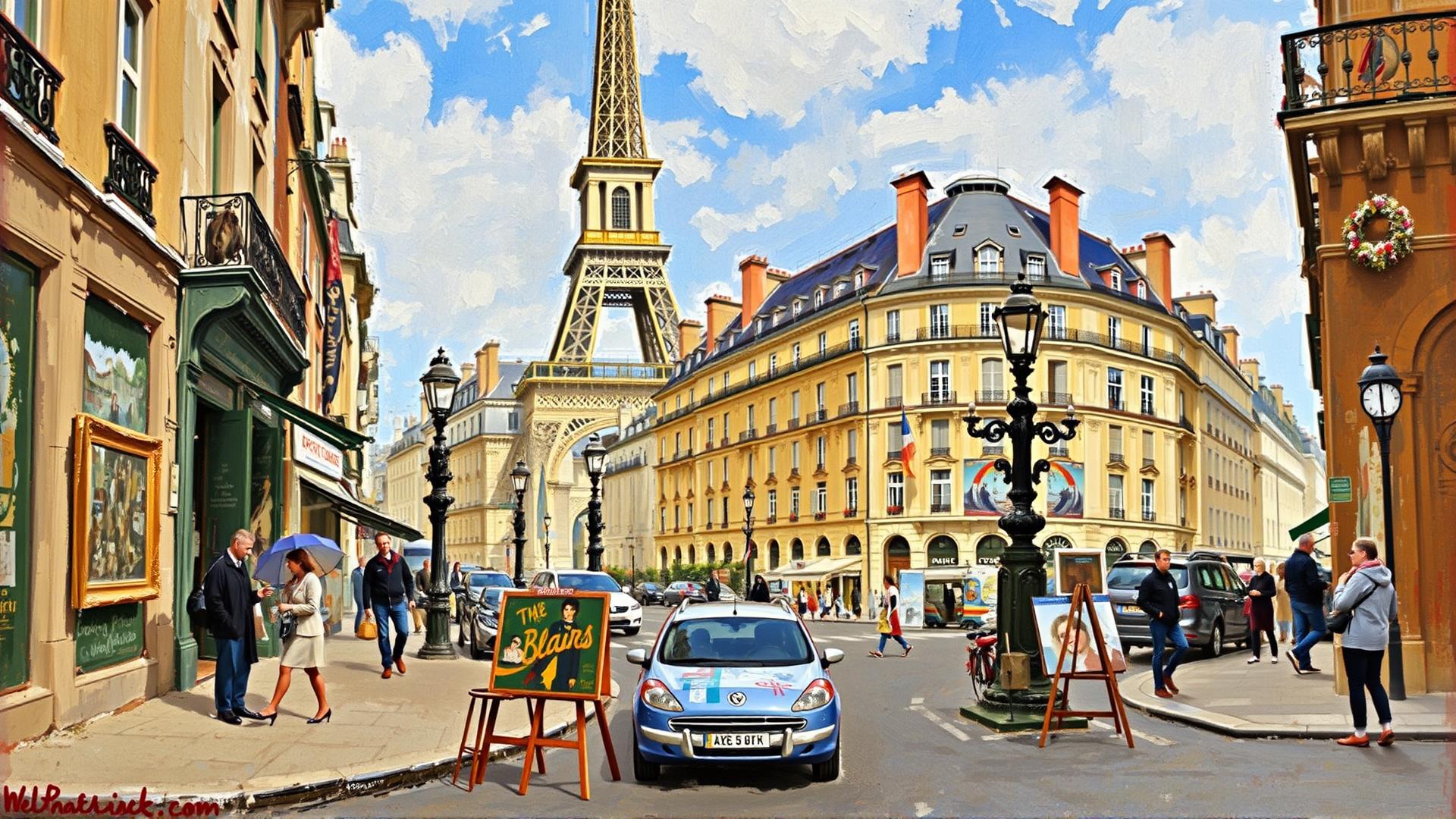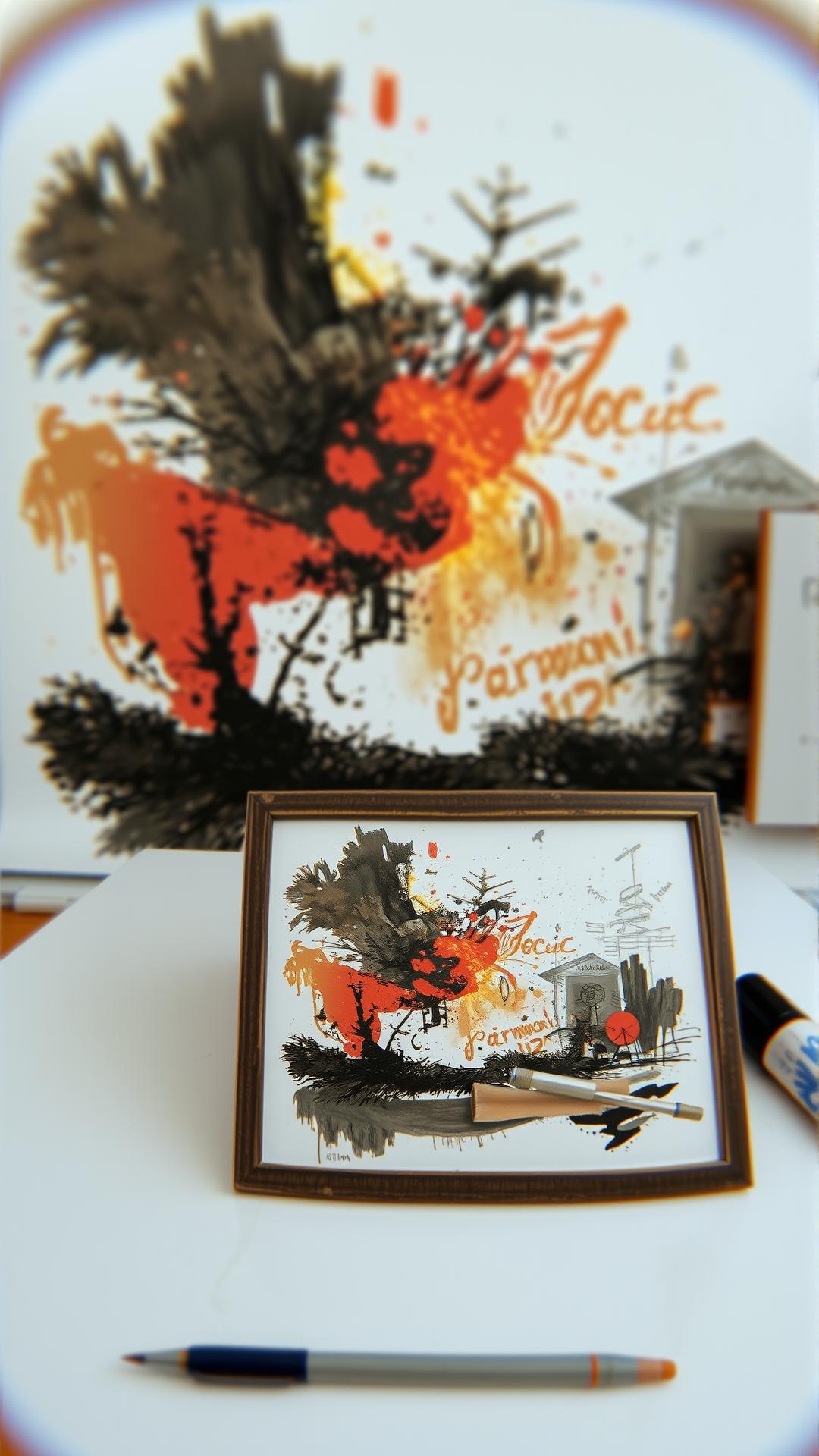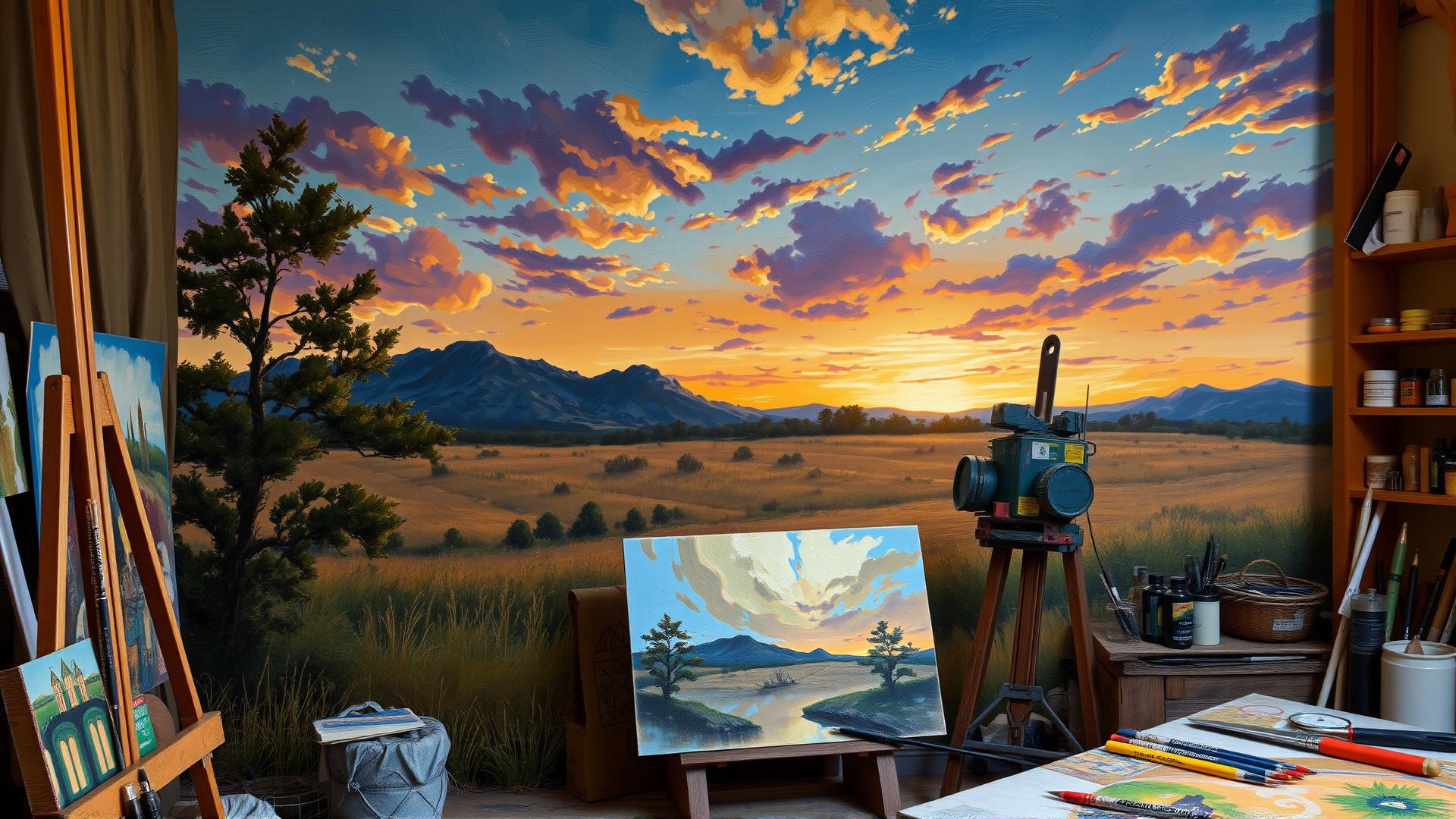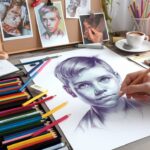
Unlocking Emotions With Bold Abstract Painting Techniques
Introduction
Abstract painting stands as a dynamic and evocative form of art, intertwining the realms of emotion and creativity through its unique visual language. At its core, abstract art liberates itself from the confines of realistic representation, instead emphasizing shapes, colors, and forms that resonate deeply within the viewer’s psyche. This style of painting empowers artists to convey their innermost feelings and explore complex themes without the need for literal interpretations. As we embark on this exploration of bold abstract painting techniques, we will uncover the emotional potency that can be unlocked through a variety of expressive methods and approaches.
Throughout the following chapters, we will look into the history, techniques, and emotional impact of abstract painting, unraveling how these elements interact to create powerful artworks. We’ll examine the techniques artists employ, such as drip painting and color field painting, detailing how these methods not only fuel creativity but also evoke emotional responses from audiences. By the conclusion of this article, you will gain a deeper understanding of how abstract painting serves as a medium for expressing profound emotions and how you can harness these techniques in your own artistic endeavors.
The Essence of Abstract Painting Unlocking Emotions Through Visual Language
Abstract painting represents a distinct departure from the confines of realism, offering a path to explore emotions with raw intensity and freedom. At its core, abstract art challenges the notion of representational accuracy, inviting viewers to engage with a visual language uniquely their own. This genre emerged in the early 20th century, evolving through movements like Expressionism, Surrealism, and later, Color Field and Abstract Expressionism, redefining the boundaries of what art can convey.
Within abstract painting, color, line, form, and shape serve as vital elements that communicate feelings, moods, and ideas without the need for recognizable subject matter. Color, for instance, holds a psychological resonance; warm hues such as red and yellow evoke feelings of energy and passion, while cooler tones like blue and green suggest calmness and introspection. Artists employ these hues strategically, often letting them collide and harmonize on the canvas to provoke varied emotional responses.
Lines also play a significant role in establishing the emotive intent of a piece. The fluidity of a sweeping line can convey movement and grace, while jagged, broken lines may reflect tension or chaos. Abstract forms, stripped of illustrative context, engage the viewer’s imagination, allowing personal interpretation and emotional connections to flourish. The creative interplay of shapes adds another layer; geometric structures may evoke stability, while organic forms can inspire a sense of fluidity and growth.
Historically, pioneers like Wassily Kandinsky and Kazimir Malevich redefined abstraction by linking art to an emotional language that transcended visual representation. Kandinsky believed that every color held spiritual resonance, using it deliberately in his works to evoke profound emotional responses. Similarly, Malevich’s “Black Square” challenged preconceived notions about art, suggesting that simplicity could carry depth and a spectrum of emotional expression.
Abstract painting acts as a conduit for emotional exploration, liberating artists and viewers alike from the limitations of pictorial reality. Each canvas becomes an invitation to encounter and interpret feelings through a rich and dynamic visual vocabulary, where the essence of human experience is distilled into a symphony of color, line, and form.
Techniques in Abstract Painting Unlocking Emotions Through Diverse Methods
Exploring Various Techniques in Abstract Painting
Abstract painting serves as an expansive playground for artists, allowing them to express profound emotions that can be difficult to articulate. Various techniques employed in this genre create a compelling visual experience, each carrying its own emotional resonance. Key among these techniques are drip painting, color field painting, and gestural painting, each offering unique methods for unlocking feelings within the viewer.
Drip painting, popularized by Jackson Pollock, transforms the canvas into an energetic dialogue between the artist and their emotion. In this technique, paint is dripped or poured onto the surface, often creating intricate webs of color and line. Pollock’s famous works, such as “No. 5, 1948,” exemplify this method, with layers of paint inviting viewers to reflect on the chaotic interplay of emotions that inspired the spontaneous movement. The randomness of the paint’s flow mimics the unpredictability of human emotion, resonating deeply with the audience.
Color field painting, on the other hand, emphasizes vast expanses of color, allowing emotions to emerge through sheer tonal presence. Artists like Mark Rothko used blocks of vibrant shades to engage the viewer’s psyche. Rothko’s paintings, such as “No. 61 (Rust and Blue),” create enveloping fields of color that provoke contemplation, drawing observers into a zone of introspection. This technique allows colors to become characters within a narrative, often inducing feelings of calm, nostalgia, or even existential reflection.
Gestural painting marries the movement of the artist’s hand with emotional expression. Artists like Willem de Kooning and Franz Kline wield their brushes with vigorous strokes, making the act of painting as important as the final product. De Kooning’s “Woman I” showcases dynamic brushwork that conveys tension and dynamism, generating a visceral response from viewers who can sense the urgency in each stroke. Such techniques evoke emotions directly, as the viewer feels the artist’s energy and intention resonate through spontaneous marks.
Overall, these techniques illustrate the myriad ways abstract painting serves as a conduit to emotional exploration. Each method not only offers different visual languages but also challenges viewers to confront and engage with their own feelings, deepening the impact of the artwork.
Emotional Impact of Color in Abstract Art
Understanding Color Psychology in Abstract Painting
Color in abstract painting serves as a powerful vehicle for emotional expression, harnessing psychological effects that resonate deeply with viewers. Artists carefully select colors to evoke specific moods, aiming to create an emotional landscape that transcends the boundaries of traditional representation. The science behind color psychology reveals that tones and shades can trigger instinctual emotional responses. For instance, warm colors such as red and orange often convey feelings of passion or energy, while cool colors like blue and green may evoke calmness or introspection.
Exploring the emotional spectrum, each color possesses its unique hue and cultural meanings. Bright yellows may elicit notions of happiness and optimism, while darker colors can provoke a sense of melancholy or contemplation. Artists often exploit these emotional connotations by juxtaposing colors, leading to heightened emotional tension within their artwork. For instance, the interplay of bold reds against subdued grays can stimulate a feeling of conflict or urgency, drawing viewers into a more profound emotional engagement with the piece.
Application of Color Techniques to Evoke Emotions
In abstract art, practitioners employ various techniques to enhance the emotional weight of their color choices. Layering, for example, allows artists to create depth and dynamism, facilitating a multifaceted emotional impact. A repeated application of vivid colors over muted backgrounds can generate a striking juxtaposition that invites contemplation and dialogue. Furthermore, techniques such as color blocking or gradient washes can streamline the emotional narrative, guiding the viewer’s eye and experience through the painting.
Color in abstract art is not merely aesthetic; it is a language that resonates with individual experiences and feelings. Artists like Mark Rothko and Wassily Kandinsky have fervently illustrated how color can symbolize deeper concepts and emotions, using pure hues to endlessly engage viewers in dialogue. By understanding their intuitive responses to color, viewers can unlock a spectrum of emotions, making each encounter unique and personal. Overall, the emotional impact of color in abstract painting is profound, paving the way for a rich tapestry of feelings that challenge and inspire the audience to reflect on their emotional landscapes.
The Role of Texture and Form Unlocking Emotions Through Bold Abstract Painting Techniques
Texture: The Emotional Canvas
Texture in abstract painting isn’t merely a physical quality; it serves as a conduit for emotional depth. Artists often manipulate surface textures to evoke feelings that resonate on a visceral level. Rough, jagged textures may inspire tension or chaos, while smooth and soft surfaces can impart a sense of calm or tranquility. In this way, texture becomes more than a visual element; it transforms into an emotional language.
Artists employ various materials to achieve different textures. The use of pallet knives, brushes, and even unconventional items like sponges or rags allows the artist to engage their medium’s tactile properties. This engagement invites viewers to experience the piece not just visually but emotionally and physically. When a viewer stands before a textured artwork, they can almost feel the energy that radiates from the surface, which can galvanize an emotional reaction — a sense of excitement, sadness, or nostalgia.
Form: Structuring Emotions
Form in abstract art encompasses the overall structure and arrangement of shapes and lines within a composition. Unlike representational art, where forms correspond to recognizable objects, abstract forms are liberated from this constraint and can express complex emotions in more fluid, dynamic ways. The deliberate arrangement of forms can create a visual rhythm that resonates with the viewer, invoking an emotional response that often bypasses rational thought.
For example, sharp angles and asymmetry may convey conflict or instability, while rounded forms paired with symmetry often evoke harmony and balance. This manipulation of form allows abstract painters to communicate their inner emotional landscapes, presenting feelings that may be difficult to articulate through traditional representations. The viewer, in turn, engages with these forms and is drawn into the artist’s emotional world, experiencing a spectrum of feelings that can be both personal and universal.
Both texture and form are vital components in the realm of abstract painting. By harnessing these elements thoughtfully, artists not only unlock profound emotional narratives but invite viewers into a shared experience that transcends the boundaries of language and representation.
Symbolism and Meaning in Abstraction The Narrative Power of NonRepresentational Forms
Discovering Layers of Meaning in Abstract Art
Abstract painting serves as a compelling medium for artists seeking to convey complex emotions and narratives through symbolism and non-representational forms. Unlike traditional art, which often relies on recognizable subjects, abstract art enables creativity to flourish in liberating ways. Here, color, shape, and form are utilized not simply as aesthetic devices but as potent symbols, signaling deeper meanings and emotional undertones.
Through the use of bold colors and dynamic forms, artists create a language that extends beyond verbal communication. For instance, a whirlwind of reds and oranges might evoke feelings of passion or anger, while softer blues might convey tranquility or sadness. This interplay of color serves as a catalyst for emotional connection, allowing viewers to project their own interpretations onto the canvas. In essence, the artist’s intent can be a mere starting point; the ultimate meaning is shaped by the viewer’s personal experiences and emotional landscape.
The Role of Non-Representational Forms in Emotional Expression
Non-representational forms, such as geometric shapes or gestural strokes, further enhance the symbolic language of abstract painting. These elements often evoke subconscious reactions, acting as visual metaphors that resonate on multiple levels. For example, a chaotic clash of jagged lines may symbolize internal conflict, capturing the turmoil of heightened emotions in a single glance. Conversely, the smooth, flowing forms might invite a sense of peace, suggesting harmony or resolution.
Many artists intentionally steer away from literal representation to encourage viewers to engage with their work on a more profound, instinctual level. By stripping away representational identifiers, they create a space for audiences to explore their interpretations. This diversity of understanding fosters a democratic relationship between the artwork and its beholder, inviting each individual to weave their own narrative through the experience of color and form.
Symbolism in abstract art allows for an expansive dialogue between the artist’s vision and the audience’s emotional response. The abstract form breaks boundaries, articulating feelings that are often too complex for words alone. As audiences immerse themselves in the vivid worlds crafted by abstract artists, they embark on a personal journey of discovery, relating to the artwork and, ultimately, to themselves.
The Contemporary Landscape of Abstract Painting Evaluating Current Trends in Emotional Expression
Emerging Artists and Innovative Movements
The topic on abstract painting has experienced a significant transformation, marked by emerging artists who challenge traditional perceptions and embrace innovative approaches that resonate with contemporary sentiments. These artists utilize a spectrum of techniques that not only reflect their personal narratives but also invite the viewer to engage emotionally with their work. Among the notable trends is the integration of mixed media, where paint interacts with materials such as fabric, found objects, and digital elements, creating a multidimensional experience. This fusion serves as a metaphor for the complexities of human emotions, allowing artists to express feelings that are difficult to articulate through conventional representation.
One prominent movement gaining traction involves the use of bold color palettes and dynamic brush strokes that evoke visceral responses. Artists like Amy Sillman and Mark Bradford incorporate powerful hues and gestural techniques to convey a sense of urgency and spontaneity. Through their work, viewers are encouraged to experience the emotions behind each stroke, transcending the boundaries of mere observation. Such approaches draw viewers into an emotional dialogue, compelling them to confront their own feelings and interpretations.
Digital technology is another influential factor shaping the current landscape of abstract painting. Artists increasingly employ digital tools, allowing for an exploration of new textures and forms that challenge the traditional practices of painting. This inclination toward digital processes not only expands the artist’s toolkit but also reflects contemporary experiences in an increasingly virtual world. The fusion of digital and physical mediums underscores the notion that emotions can be expressed through both tangible and ephemeral means, further broadening the spectrum of abstraction.
The rising generation of abstract artists also places a pronounced emphasis on community engagement and collaborative practices. Initiatives that involve public participation in the creation of large-scale abstract installations foster a sense of collective emotional expression. Artists like Nari Ward, who utilizes community-sourced materials and stories, demonstrate how shared experiences can materialize into impactful art that resonates on multiple levels. This trend invites viewers to become active participants in the artistic process, breaking down barriers and deepening the emotional connections between the artwork and its audience.
As abstract painting continues to evolve, these current trends reflect a vibrant exploration of emotional expression. By embracing new techniques and collaborative practices, emerging artists are redefining the boundaries of abstraction, ultimately creating a contemporary landscape that speaks to the complexities of modern emotions.
Crafting Your Own Abstract Experience Engaging with Emotions through Bold Abstract Painting Techniques
Personal Connection with Abstract Art
Abstract painting offers a unique opportunity for viewers to connect with their innermost feelings. Unlike representational art, abstract pieces work on a different level, engaging the observer’s emotions in an intimate dialogue. When viewing abstract art, allow yourself to let go of preconceived notions of what art “should” be. Tune in to your feelings as you look at different colors, shapes, and textures. What resonates with you? What stirs an emotional response? By fostering this personal interaction, viewers can begin to unlock their own emotional experiences through abstract art.
Creating Your Own Emotional Abstract Artwork
Engaging in the creative process is a profound way to express emotions through abstract painting. Here are some practical tips to guide you on your artistic journey:
- Choose Your Emotions: Before putting brush to canvas, take a moment to reflect on the emotions you wish to express. Are you channeling joy, sadness, anger, or serenity? Pinpointing a specific feeling will help guide your artistic choices.
- Color Palette: Colors evoke different emotions. Experiment with hues that resonate with your chosen feeling. Warmer colors like reds and yellows can convey energy and passion, while cooler tones like blues and greens elicit calmness. Let your instincts guide you in selecting colors that speak to you.
- Tools and Techniques: Don’t be afraid to explore various tools—brushes, palette knives, or even your fingers. Techniques like layering, splattering, and sweeping can add complexity and texture to your artwork, reflecting the nuances of your emotions. Embrace spontaneity; let your actions be a physical manifestation of your emotional state.
- Trust the Process: Abstract art thrives on the process rather than the final product. Allow your emotions to take control as you paint, responding instinctively to what feels right. If you make a “mistake,” see it as an opportunity to explore further. Every mark on the canvas contributes to your emotional narrative.
- Reflect After Creation: Once your piece is complete, step back and reflect on the work. What does it say about your current emotional state? Engaging in this reflective practice can deepen your understanding of both the art and yourself.
By following these tips, you can create an abstract piece that not only serves as a personal expression of your emotions but also invites viewers to engage with it on a deeper level, continuing the cycle of emotional exploration in art.
Conclusions
Bold abstract painting techniques offer a profound way to express emotions through the interplay of color, form, and texture. By examining the historical context and diverse methods that characterize this art form, we bring to light how artists have harnessed these elements to evoke emotional responses and challenge perceptions of reality. As we’ve explored various techniques like drip painting and the impact of color theory, it’s evident that abstraction not only serves as a visual language but also as a conduit for conveying complex human experiences.
As you consider your own journey in abstract art, remember that the beauty of this medium lies in its ability to reflect personal emotions and stories. By experimenting with the variety of techniques and approaches discussed, you too can unlock a world of creative expression. Whether you are an aspiring artist or an admirer of abstract art, embracing the emotional depth that lies within this genre can inspire both creativity and connection in the vibrant landscape of contemporary art.
